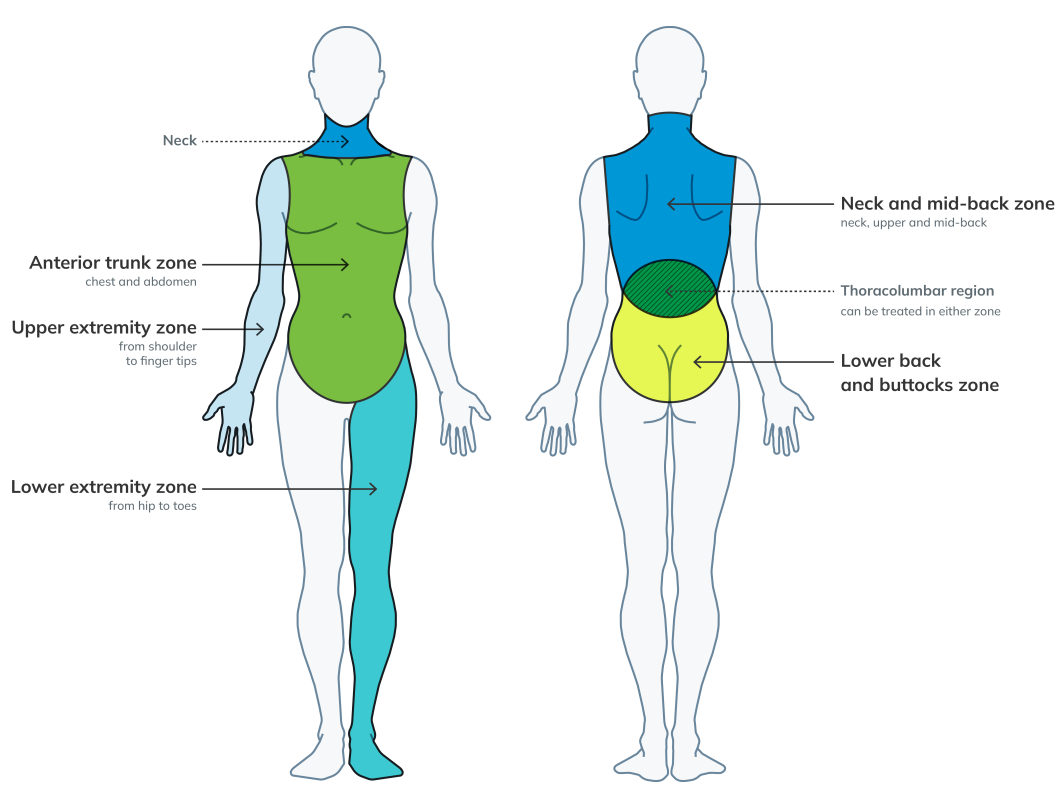The musculoskeletal program of care is a community-based health care program delivered by members of regulated health care professions under their respective Colleges’ regulations, standards of practice, policies and guidelines. The program is designed to provide early care to people with musculoskeletal injuries inclusive of low back, shoulder and non-surgical fractures. It is the mandatory first line of care for all musculoskeletal injuries.
Admission criteria
The musculoskeletal program of care is for people who:
- have a pending or allowed WSIB claim for a single zone of injury, or
- have an allowed WSIB claim for multiple zones of injury
- are within eight weeks from their date of workplace injury
- have an injury to
- a muscle, tendon, ligament, fascia, intra-articular structure or any combination of these structures, causing mild to moderate damage (Grade I or Grade II) and/or
- a bone, resulting in fracture(s) that did not require surgical intervention
- are at work or off work
- have no additional injuries that prevent participation in this program
- are not hospitalized
Single zone of injury versus multiple zones of injury
A single zone of injury is defined as any and all injuries in one anatomical zone while multiple zones of injury is defined as any and all injuries in two or more anatomical zones. There are five distinct anatomical zones illustrated in the diagram.
- If the person has a single zone of injury, you can complete block one of treatment in the musculoskeletal program of care regardless of registered claim status (pending or allowed)
- You must confirm that the person’s claim has been approved before starting block two
- Where there are multiple zones of injury, the provider must call us to confirm entitlement for multiple zones of injury at the beginning of block one
Program structure and duration
The program consists of two, four-week blocks of care for a total duration of up to eight weeks. The first block includes the initial assessment and four weeks of treatment. The second block is an additional four weeks of treatment. The provider must deliver a minimum number of visits in each block. A supplementary treatment block is available for people, with WSIB approval, who need additional treatment beyond the eight-week program to ensure safe and sustainable return to work.
Recommended treatment interventions
- Education
- Pain and self-management strategies
- Activity modification
- Exercise therapy
- Manual therapy
- Adjunct therapeutic interventions or modalities
The recommended treatment interventions chosen for each person should be based on the clinical judgement of the delivering regulated health professional and take into consideration best evidence and the person’s functional recovery needs. To deliver the musculoskeletal program of care, either as a sole provider or as part of an interdisciplinary team, you must be able to deliver all interventions. Everyone in the musculoskeletal program of care must receive education.
Treatment session duration and frequency is left to the clinical judgement of the treating regulated health professional. We will be monitoring and evaluating the outcomes related to care and sustainable return to work across the program to identify and recognize optimal delivery models for frequency and duration across injury types.
Outcome measures
Outcome measures:
Communication and reporting
You must call the WSIB in the following scenarios:
- At the beginning of block one to confirm entitlement to multiple zones of injury
- At the end of block one to confirm entitlement for a single zone of injury, if unknown,
Call the Clinical Expert Line if:
- The injured person does not meet the admission criteria for the musculoskeletal program of care
- At end of block one if you identify a lack of progress in functional abilities or more than two barriers to recovery
- The injured person is not expected to meet their recovery and return-to-work goals one week before completing the second block
- The injured person’s recovery is not progressing as expected, at any time during the program, to discuss options for specialized assessment/treatment
- There are delays or interruptions (e.g., illness) in services that lasts beyond one week
Call the Case Manager or Nurse Consultant if:
- Additional treatment is required after the first supplementary block
- The injured person’s recovery is not progressing as expected at any time during the program
- You are looking for more information related to return to work or employer accommodations to help with your treatment planning
Three reports are required:
- – submitted two business days after completing the initial assessment
- – submitted two business days after the last treatment session in block one
- – submitted two business days after discharge
For general inquiries, call 1-800-387-0750.
To reach our Clinical Expert Line, please call 416-344-5739 or toll free 1-866-716-1299 Monday to Friday from 7:30 a.m. to 5 p.m.
You must register with the WSIB in order to deliver this musculoskeletal program of care. Providers who are already registered to deliver programs of care must reregister.
For more information, please see the musculoskeletal program of care: Reference guide.

